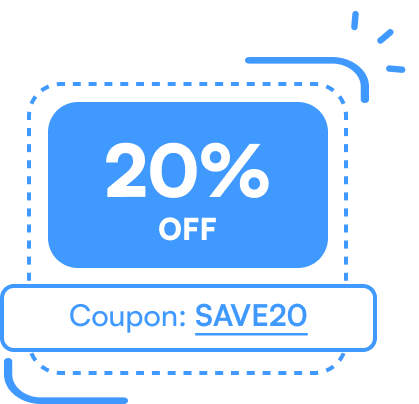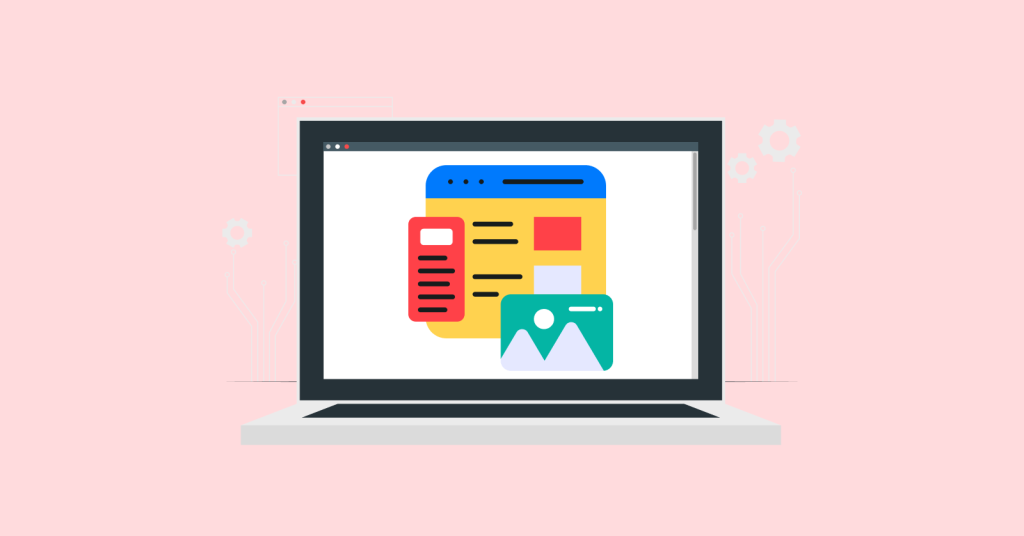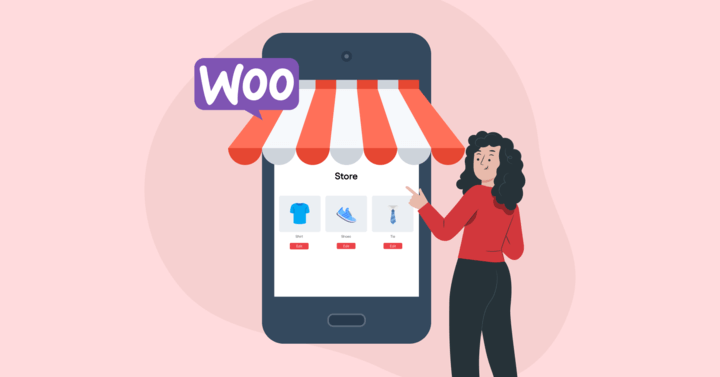You know what the backbone of any WooCommerce store is? It’s not the size of your store or how rare your products are, but customer satisfaction. That’s why “Order Fulfilment” should take utmost priority when it comes to business success.
A smooth and consistent WooCommerce order fulfillment process can gain your customers’ trust and help you widen your customer base. Moreover, having a well-structured fulfillment system removes half of the headache and allows you to shift your focus to growing your business.
If you are a newbie or just starting a WooCommerce store, this blog will help you learn the basics of WooCommerce order fulfillment and implement it in your store.
Increase customer retention by providing discounts along with an optimized fulfillment procedure using the Discount Rules plugin.
What is WooCommerce Order Fulfillment?
Order fulfillment is completing a customer’s order, from order placement to delivery to your customers. The definition remains the same for WooCommerce too.
If you own a WooCommerce store and sell products through it, you need a system for each step such as capturing the order of the customer, checking if the product is available in your inventory, getting the customer’s information, and payment status, and moving the product to packaging and delivery.
In short, WooCommerce order fulfillment is a comprehensive process that ensures customer orders are efficiently managed in each step and ensures smooth order fulfillment. For a more detailed breakdown, go through the explanation below.
Stages in WooCommerce Order Fulfillment
WooCommerce order fulfillment is done in 8 broad steps and typically includes the following. Every product you are selling via WooCommerce stores has to pass through these stages for efficient delivery management. Here’s the list of it.
1) Order Placement
This refers to the process of placing an order on your WooCommerce website. When placing an order, customers are asked to choose a specific one if it happens to be a WooCommerce variable product. Then, they have to enter the payment details, WooCommerce shipping information, etc.
Order placement is an essential step as it activates the WooCommerce order fulfillment workflow in your online store.
2) Order Processing
Once the order is placed by the customer, it is checked for WooCommerce product availability in the inventory. If available, customers are taken to the payment gateway, where they’ll choose the mode of payment, pay for the order, and get it verified.
3) WooCommerce Inventory Management
This is the process of managing the products in your warehouse or inventory. After order placement, the product that is supposed to be dispatched to the customer is located in the inventory and will be sent for packaging and shipping.
All of this information is updated in real-time ensuring optimal stock levels are maintained and adjusted based on daily sales and lead time.
4) Picking & Packing
In this stage, the specific items from the warehouse are picked and will be sent for packing. Once they are picked, products should be packed with appropriate packaging materials such as boxes, envelopes, or hard casings with necessary protective paddings.
Streamlining this procedure can reduce the time it takes for WooCommerce order fulfillment. As a store owner, you must choose the optimal packaging material that can minimize your overall operational costs.
5) WooCommerce Shipping
This step is where the product comes out of the warehouse. These products are labeled with the customer’s address and other information and are assigned to any delivery services. Products are then handed over to WooCommerce shipping carriers for delivery. Shipping labels and tracking numbers are assigned to them that are unique to each product.
Provide free shipping for first-time customers using the Discount Rules for WooCommerce PRO plugin and increase customer satisfaction.
6) WooCommerce Order Tracking
Once the product is shipped, customers are provided with tracking details with which they can see where the product is currently and the estimated time of delivery, in real-time. This provides transparency and peace of mind to the customers.
Some of the terms that are usually used here are Order received, Processing, Shipped, Out for Delivery, etc.
7) Delivery
This is the last step where the delivery partner delivers the product to the customer’s specified address. This step is also called the “Last-mile delivery.” Depending on the shipping method chosen by the customer, the package is delivered to the customer’s home, office, or nearby pickup point.
8) Order Completion
Once the order is delivered, the order is marked as “Completed” in WooCommerce and the transaction is over. In case the order is still being processed or delayed for any reason, it will not be marked as completed.
Customers typically receive a notification confirming their order has been delivered. This presents a chance for WooCommerce store owners to get feedback or a review. In some cases, returns/exchange services are provided after delivery for which the customers may contact your support team for assistance.
Types of Order Fulfillment Options in WooCommerce
In-house (manual), dropshipping, third-party fulfillment, hybrid model, Print-on-demand, local pickup, automated fulfillment.
There are many ways in which a WooCommerce store owner can fulfill customer orders. Each method of order fulfillment provides different levels of comfort, control, speed, and cost for the store owner.
Based on your business size and customer needs, choose a method that suits the most. Following are the types of order fulfillment options followed in most WooCommerce stores.
1) In-House WooCommerce Order Fulfillment
In-house order fulfillment, also called “Manual Fulfillment” is a method where the store owners or their team manually processes the order, packs it, and ships it to the customer’s address without any automation or third-party assistance.
From picking and packing the product, and managing the inventory to shipping, everything is done by the store people themselves.
Advantages:
- Complete Control: WooCommerce store owners can have complete control over the fulfillment process which includes quality checks, packing, and shipping.
- Lower Initial Investment: Compared to third-party WooCommerce fulfillment services, in-house management doesn’t require much spending and can help you save costs upfront.
- Personalization: The main advantage of this method is that it gives flexibility to the store owners to customize. Store owners can add hand-written notes or more personalized packaging based on customer requirements.
Disadvantages:
- Time-Consuming: Manually sorting orders can consume a significant amount of time, which you can better utilize in other works.
- Labor Costs: Sometimes, if the orders are too high, you need additional labor which needs additional time and money.
- Scalability Issues: In-house order fulfillment won’t be suitable if you are scaling up your business. If your business grows, you need to handle a large volume of orders and, manually packing them leads to errors and delays.
2) Dropshipping
In this model, store owners do not keep products in stock. Instead, when an order gets placed, the product is shipped to the customer directly from the supplier. The third-party supplier will also handle the WooCommerce inventory management and order fulfillment parts.
In short, dropshipping involves WooCommerce store owners providing an online storefront that promotes products and forwards the orders to the suppliers.
Advantages:
- No Inventory Required: Store owners don’t need to maintain an inventory and handle products, reducing overhead costs.
- Low Risk: The risk involved here is very low as the store only purchases products when a customer places them, which reduces financial risks.
- Wide Product Catalogue: Since there is no need to maintain an inventory, WooCommerce store owners can provide a diverse range of products without needing to stock them.
Disadvantages:
- Less Profit Margin: Compared to in-house order fulfillment, dropshipping doesn’t offer much profit to WooCommerce store owners.
- Less Control: Dropshipping offers little to no control over product quality, packing, shipping, etc as suppliers manage all those aspects.
- Shipping Complexities: Shipping and delivery becomes complicated if multiple suppliers get involved. This leads to shipping issues and longer delivery times.
3) Third-party WooCommerce Order Fulfillment (3PL)
If you are a WooCommerce seller who wants to reduce logistical complexities and focus on your business, then outsourcing order fulfillment to third-party WooCommerce logistics is the best way. Warehousing, packing, and shipping operations to third-party logistics providers to manage order fulfillment on behalf of your store.
Advantages:
- Large-Scale Orders: Third-party logistics can handle large order volumes easily without much hassle. If you are doing business on a large scale, 3PL is the most suitable.
- Efficiency: Third-party logistics can manage warehousing, packaging, and shipping much more efficiently than any of the order fulfillment methods.
- Faster Shipping: Product delivery takes less time, as third-party logistics have fulfillment centers in multiple locations to speed up delivery times.
Disadvantages:
- High Costs: Acquiring a WooCommerce 3PL service can be expensive, especially if you are a small business.
- Less Control: Store owners have limited control over the fulfillment process and customer services. Any issues on the 3PL’s end, like delays or mistakes, can impact your business and customer experience.
4) Automated Fulfillment
Here, you’ll use technology to automate various steps within the order fulfillment process. This automation can either be done in-house or through third-party logistics. Several third-party tools like ShipStation, ShipBob, or Fulfillment by Amazon (FBA) automate the shipping, packing, and tracking process.
Automated order fulfillment is a mix of in-house as well as third-party fulfillment based on WooCommerce sellers’ requirements.
Advantages:
- Efficiency: Automated fulfillment reduces manual work to a great extent, which helps speed up order fulfillment. Automation also minimizes human errors in order processing and shipping.
- Scalability: As your business grows, automated order fulfillment systems handle more orders without the need for any significant changes.
Disadvantages:
- High Costs: Initial investment in automation tools or plugins can be costly for WooCommerce sellers. Also, issues with software or integrations can lead to disruption in your WooCommerce order fulfillment services.
5) Hybrid Model
The hybrid model of order fulfillment is a mix of in-house (Manual) and automated fulfillment, where some products are fulfilled manually and some others are automated or handed to third-party logistics. Here’s the list of advantages and disadvantages of this method.
Advantages:
- Risk Mitigation: The hybrid model reduces the reliance on a single fulfillment method. If one method fails, WooCommerce sellers have the flexibility to choose another method.
- Customer Experience: Provides flexibility to offer multiple fulfillment options based on their requirements like faster shipping for in-house items or cost-effective options via third-party logistics.
Disadvantages:
- Inventory Complexity: Maintaining two fulfillment options can create challenges, especially if stocks are stored in different locations.
- Complex Management: Managing both in-house and outsourced fulfillment processes can be challenging and requires careful coordination. When working with third-party logistics, there is a risk of miscommunications.
6) Local Pickup
As the name suggests, local pickup allows customers to choose a physical location from where they can pick up their products instead of having them shipped directly to their addresses. Instead of waiting for the delivery, customers can collect items whenever they want.
Advantages:
- No Shipping Costs: The main advantage of local pickup is that customers can avoid shipping fees and can pick up their orders whenever they want to.
- Faster Fulfillment: Orders are typically available for pickup immediately after purchase. This also offers an opportunity for customers to visit their store in person, which in turn increases brand awareness.
Disadvantages:
- Inconvenience: If local pickup is the only option provided to the customers, it might cause inconvenience. Not many customers may be able to pick up their orders in person.
- Limited Reach: WooCommerce order fulfillment via local pickup is suitable only for customers located near the physical store or warehouse. Otherwise, this method won’t work out.
7) Print on Demand
If you are selling custom printed tees, coffee mugs, posters, or anything customizable, follow this method.. Here, items are produced only after a customer places an order and asks for personalization. WooCommerce sellers following this method work with a third-party supplier or a printing partner.
Advantages:
- Low Risk: Since products are printed only after the order gets placed, there’s minimal risk to the sellers. Moreover, there’s no need to buy stock in advance or store products.
- Customizations: Allows for a personalized customer experience with custom designs.
Disadvantages:
- Lower Profit: Since sellers tie up with third-party providers, the profit margins get lesser as the production cost per item increases.
- Longer Shipping Times: Sometimes printing and customization take longer than usual. This leads to delayed shipping and delivery to the customers.
Documents Required for WooCommerce Order Fulfillment
Order invoice, packing slip, shipping label, customs declaration form (international orders), payment confirmation/receipt (order confirmation email), tracking information, product warranty (instructions),
a) Picking List:
Locating and picking up products from your warehouse is the first step in WooCommerc order fulfillment. A pick list is a document that lists all the items that need to be picked from the inventory for a specific order.
This list typically includes the order number, product information, etc. In short, a pick list helps warehouse staff gather the right products quickly and accurately.
b) Order Invoice:
This is a detailed document that contains customer information, product details, price, taxes, and total amount. Order invoice is a record for both the WooCommerce store owners as well as the customers.
This document is emailed to the customers after the order gets placed and is also essential for tracking customer transactions.
c) Packing Slip:
A packing slip accompanies the product in the package and is used by the order fulfillment team to ensure all the items are correctly packed. This document is placed inside the package and contains information like order information, product list, packaging instructions, and return instructions.
d) Shipping Label:
This document is used to ship products from the seller to the customer and is affixed to the outside of the package. One can find information like sender and recipient details, shipping carrier information, tracking number, barcode, and package dimension and weight.
Shipping labels are generated directly through the WooCommerce store or by third-party WooCommerce shipping carriers.
e) Customs Declaration:
This one’s used for international shipments to declare the contents of the package, its price, and country of origin. This also ensures the product complies with import/export regulations.
Information like item description, quantity value, origin country, HS code, and customs duties and taxes are included here. A Customs declaration form is required when shipping outside the country and helps prevent delays at customs.
f) Payment Confirmation:
If the customer has prepaid for the order, a confirmation slip mentioning that the order has been paid for is pasted. If not, a payment slip containing the payment information like the rice is pasted on it.
This document is automatically generated by the payment processor or your WooCommerce system, confirming the payment.
g) Tracking Information:
Once the order has been shipped to the customer, tracking information is provided to the customer. It contains a tracking number, carrier name, shipping method as well as the estimated time of delivery. This document is sent to the customer, allowing them to track the order status in real time.
Along with the above documents, a product warranty or instruction manual is also provided if applicable. This ensures customers understand how to properly use the product and are aware of the warranty or support available to them.
How to Optimize WooCommerce Order Fulfillment
Customer satisfaction has to be the utmost priority for any eCommerce/WooCommerce store owner as it directly impacts your sales in the long run. To gain a competitive advantage over other online sellers, one needs to optimize their WooCommerce order fulfillment procedure.
Optimizing WooCommerce order fulfillment involves improving your online store’s operation efficiency, customer satisfaction, and fulfillment process for business success. Here are some points you should consider while optimizing your WooCommerce order fulfillment process.
a) Automate Order Processing
To make your order processing easier for your customers, integrate WooCommerce extensions like WooCommerce Order Status Manager or AutomateWoo to automate tasks like sending order confirmations or updating order status to your customers.
b) Optimize Inventory Management
Track stock levels and forecast demand in real time using predictive analytics to forecast sales and do WooCommerce stock control stock during peak seasons. If you sell through multiple channels, use multi-channel inventory management tools like TradeGecko or SkuVault to keep everything in sync.
c) Third-Party Fulfilment Services
If you are scaling up and in-house order fulfillment is becoming a challenge, consider partnering with third-party logistics like ShipBob or ShipStation. These tools handle warehousing, packing, and shipping to fulfill your orders quickly.
d) Optimize Packaging & Shipping
Provide customers with a choice of shipping methods such as standard, expedited, same-day delivery, etc. You can also integrate shipping services like Shippo or WooCommerce Shipping to automate label printing provide tracking info and save time.
e) Monitor and Analyze Order Data
Regularly review fulfillment workflows to identify any delays or inefficiencies to prevent bottlenecks. You should also track fulfillment metrics to track the performance of your order fulfillment process such as order processing times, shipping costs, and customer satisfaction.
f) Improve Customer Communication
Offer clear and easy communication channels for customer inquiries about their orders. Providing FAQ pages, Live chat, or email support can help address concerns quickly.
Efficient usage of WooCommerce plugins can allow store owners to automate tasks, manage inventory, and enhance the shipping process. Right plugins can significantly improve operational efficiency, reduce human error, and ultimately enhance the order fulfillment process.
Common Issues in WooCommerce Order Fulfillment
Some of the common issues with the WooCommerce order fulfillment process can impact the efficiency, accuracy, and customer satisfaction of your online store.
a) Stock Management Problems:
Selling products that are out of stock due to poor inventory management can lead to customer frustration. Overstocking can result in high storage costs and potential waste. WooCommerce sellers should also be mindful of discrepancies between actual stock and what’s shown in the system can lead to backorders or failed shipments.
b) Shipping Delays:
Delays in processing and shipping orders can lead to customer dissatisfaction. Problems with third-party carriers or not offering multiple shipping methods can result in customer frustration.
c) Complex Return/Exchange Process:
If the WooCommerce returns/exchange process in your WooCommerce store is complex for your customers, it can create frustration and lead to negative reviews. If you are issuing refunds, returns, and exchanges manually, you must be cautious about not making any mistakes with it.
d) Customer Services Issues:
Lack of proactive communication can lead to dissatisfaction among customers. Not handling customer complaints efficiently can hurt customer trust in the long run.
e) Lack of Integration with Other Tools:
If WooCommerce isn’t integrated with shipping carriers, fulfillment services, or inventory systems, the order fulfillment process becomes more prone to errors. Using plugins like WooCommerce shipping plugins and extensions can help you make your WooCommerce order management procedure more efficient.
Besides the above-mentioned issues with order fulfillment, you might also encounter issues with packing, order processing, order status, miscalculations in shipping costs, or a complex WooCommerce international shipping setup. You can improve your order fulfillment process by identifying and addressing these challenges.
Ensure discounts are applied correctly across stores to reduce confusion for customers and the order fulfillment team using the Discount Rules plugin.
Conclusion
WooCommerce order fulfillment poses different challenges for different levels of businesses. For example, if you are just starting in WooCommerce, the main challenge is to gain control over basic operations such as choosing the right shipping carriers, maintaining accurate inventory stock levels, setting up responsive customer service, etc.
When your WooCommerce store grows, your challenge shifts towards handling higher order volumes, managing multiple sales channels, and more advanced automation, etc.
Identify which stage you are at and find the right strategy and tools to overcome these hurdles and ensure smooth operations and business growth.
Frequently Asked Question
The best WooCommerce shipping plugins depend on your needs. ShipStation is one of the best plugins that offers easy integration and support for multiple carriers. WooCommerce shipping integration, offers automatic label printing, WooCommerce tracking, etc to simplify the WooCommerce order fulfillment process.
Effective WooCommerce packaging solutions for eCommerce fulfillment include custom or automated packaging systems. You can also integrate with WooCommerce warehouse management systems to streamline the packing process.
No, WooCommerce doesn’t do order fulfillment directly rather it provides integration with third-party order fulfillment plugins that can automate your order fulfillment process.
To automatically complete orders in WooCommerce, you can either use plugins like “WooCommerce Order Status Control” or configure the Cron job to “WooCommerce” -> “Settings” -> “Autocomplete Orders.” Then, enable the Cron job to update the status of past orders automatically.
eCommerce order fulfillment is about handling the product from picking up the product from the warehouse to delivering it to the customer’s address either by the store owner or a third-party fulfillment service. Dropshipping is s type of order fulfillment where the store owner doesn’t handle the products or inventory rather it is assigned to a supplier through them.
Yes, there are several WooCommerce shipping plugins available for free. Some of them are Table Rate Shipping for WooCommerce, WooCommerce ShipStation Integration, etc. which can be considered as WooCommerce delivery options too.
Yes, there are free WooCommerce inventory management plugins such as WP Inventory Manager, ATUM Inventory Management for WooCommerce, etc.





